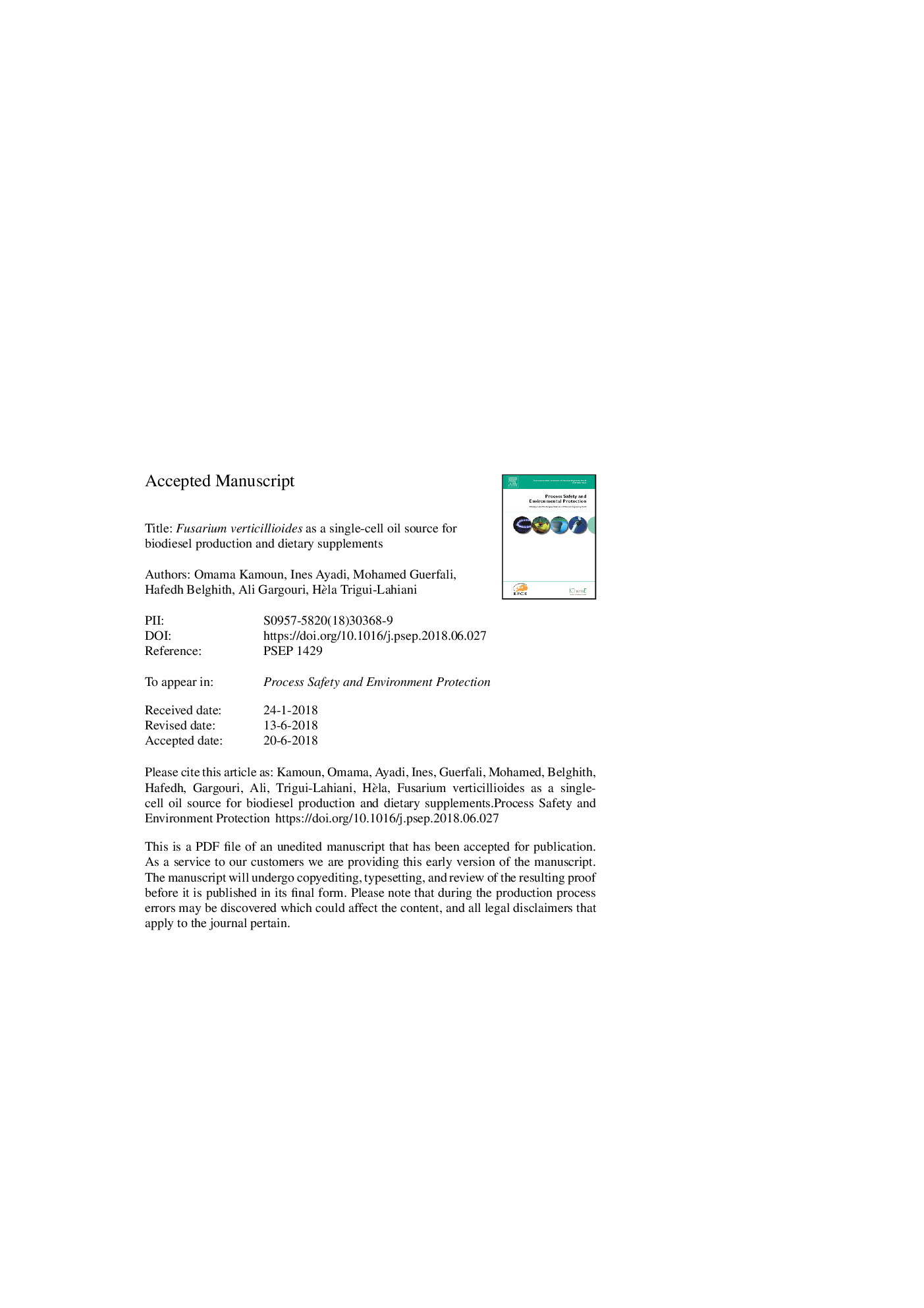| Article ID | Journal | Published Year | Pages | File Type |
|---|---|---|---|---|
| 6973861 | Process Safety and Environmental Protection | 2018 | 43 Pages |
Abstract
A newly isolated oleaginous fungus called E4-2 and identified as Fusarium verticillioides was selected as a potential source of lipid production using glucose as carbon source and a mixture of ammonium chloride and yeast extract as nitrogen sources. A maximum lipid accumulation of 1.88 g/L and a lipid cell content of 38% were obtained at optimal pH and temperature equal to 5 and 30 °C, respectively. Moreover, the E4-2 strain can grow on a variety of low-cost agro-waste carbon sources. Interestingly, waste cooking oils (1.67 g/L) and soap stock of refined olive oil pomace (1.25 g/L) were optimal for a maximum lipid accumulation. Gas chromatography analysis of the extracted lipids revealed that, similar to some vegetal oils, the prominent fatty acid (FA) constituents were C18:1 (34.65%), C18:2 or Ï6 (30.78%) and C16:0 (25.61%) with a high Ï6 content. More interestingly, the Ï3 content rose from 0.86 to 1.71 when culture temperature was set from 30 to 25 °C. The predictive determination of biodiesel properties from fatty acids profile suggests that E4-2 lipids may favorably be used for biodiesel production. All these characteristics argue in favor of the great biotechnological potential of the lipids produced by our strain.
Keywords
WCOHHVFusarium verticillioidesSFAMUFASSOSPOAPEPHBCFPPSaponification valueIodine valuePolyunsaturated fatty acidsPUFAsaturated fatty acidsmonounsaturated fatty acidsKinematic viscosityOptimizationBiodieselDegree of unsaturationWaste cooking oilsWheat branOleaginous fungusLipidCloud pointOxidation stabilityPolyhydroxybutyrateHigher heating value
Related Topics
Physical Sciences and Engineering
Chemical Engineering
Chemical Health and Safety
Authors
Omama Kamoun, Ines Ayadi, Mohamed Guerfali, Hafedh Belghith, Ali Gargouri, Hèla Trigui-Lahiani,
